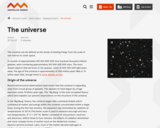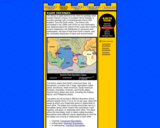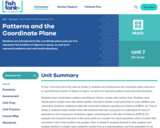
Basic information about the universe, its origin and composition. Also includes information about galaxies, stars, and the sun.
- Subject:
- Science
- Material Type:
- Reading
- Provider:
- Australian Museum
- Date Added:
- 12/01/2023

Basic information about the universe, its origin and composition. Also includes information about galaxies, stars, and the sun.

Biology 2e is designed to cover the scope and sequence requirements of a typical two-semester biology course for science majors. The text provides comprehensive coverage of foundational research and core biology concepts through an evolutionary lens. Biology includes rich features that engage students in scientific inquiry, highlight careers in the biological sciences, and offer everyday applications. The book also includes various types of practice and homework questions that help students understand—and apply—key concepts. The 2nd edition has been revised to incorporate clearer, more current, and more dynamic explanations, while maintaining the same organization as the first edition. Art and illustrations have been substantially improved, and the textbook features additional assessments and related resources.


By the end of this section, you will be able to do the following:
Describe the process of binary fission in prokaryotes
Explain how FtsZ and tubulin proteins are examples of homology

Plate Tectonics provides geology with a comprehensive theory that explains how the Earth works.

As part of the General Chemistry Virtual Textbook, this site examines a variety of topics related to the elements. Topics covered in the discussion include Primordial Chemistry, Stellar nucleosynthesis, Hydrogen burning, and more.

Students participate as a class in this activity using their desks as points on the coordinate plane. The teacher leads them in the activity, increasing their understanding of the characteristics of the coordinate plane.

Find the human ancestor you are interested in and click on it either in the timeline or the list below for more details. Each fossil or reconstruction pictured includes links to more details about it.

This video provides an introduction to all four quadrants of the coordinate plane. As you watch and listen to the teacher and student interact it helps clarify the thinking behind applying this concept. [5:28]

This site provides an introduction to the origin of the universe for the young child and the Big Bang theory. There is also a song about the Doppler Shift. Vocabulary glossary and printable version available.

NOVA takes a comprehensive look at the origin of different species of dogs in this feature. Interesting information like, why do they come in so many shapes and sizes, and why do they have us right where they want us is provided.


A study of the moon that centers on its origin, its structure, and its behavior.

The purpose of this lesson is to teach students about the three dimensional Cartesian coordinate system. It is important for structural engineers to be confident graphing in 3D in order to be able to describe locations in space to fellow engineers.

This video segment adapted from NOVA explains the origin of the elements and how scientists use unique element profiles to identify supernova types.

This video segment adapted from NOVA follows the Apollo 15 astronauts as they collect samples of ancient rock from the Moon's crust, whose discovery helps lead to a radical new theory about the Moon's origin.

This video segment [3:56] adapted from NOVA follows the Apollo 15 astronauts as they collect samples of ancient rock from the Moon's crust, whose discovery helps lead to a radical new theory about the Moon's origin.

Students are introduced to the coordinate plane and use it to represent the location of objects in space, as well as to represent patterns and real-world situations.

Detailed math tutorial features notes and examples that take a look at symmetry, discussing symmetry about the x-axis, y-axis, and the origin. Shows methods for testing the symmetry of a graph.